




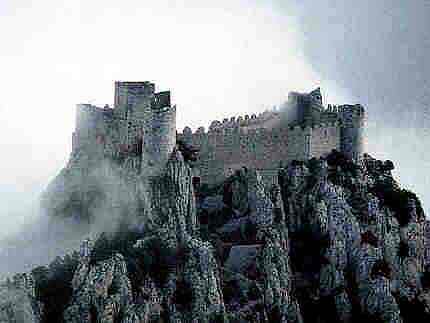
 One of the most persuasive testimonials we found to the existance and activities
of the Prieure de Sion dated from the late nineteenth century. The testimonial in
question is well enough known - but it is not recognised as a testimonial. On the
contrary it has always been associated with more sinister things. It has played a
notorious role in recent history and still tends to arouse such violent emotions,
bitter antagonisms and gruesome memories that most writers are happy to dismiss
it out of hand. To the extent that this testimonial has contributed significantly
to human prejudice and suffering, such a reaction is perfectly understandable. But
if the testitmonial has been criminally misused, our researches convinced us that it
has also been seriously misunderstood.
One of the most persuasive testimonials we found to the existance and activities
of the Prieure de Sion dated from the late nineteenth century. The testimonial in
question is well enough known - but it is not recognised as a testimonial. On the
contrary it has always been associated with more sinister things. It has played a
notorious role in recent history and still tends to arouse such violent emotions,
bitter antagonisms and gruesome memories that most writers are happy to dismiss
it out of hand. To the extent that this testimonial has contributed significantly
to human prejudice and suffering, such a reaction is perfectly understandable. But
if the testitmonial has been criminally misused, our researches convinced us that it
has also been seriously misunderstood.
The role of Rasputin at the court of Nicholas and Alexandra of Russia is more or less generally known. It is not generally known, however, that there were influential, even powerful esoteric enclaves at the Russian court long before Rasputin. During the 1890's and 1900's one such enclave formed itself around an individual known as Monsieur Philippe, and around his mentor, who made periodic visits to the imperial court at Petersburg. And Monsier Phillippe's mentor was none other than the man called Papus - the French esotericist associated with Jules Doinel (founder of the neo-Cathar church in the Languedoc.), Peladan (who claimed to have discovered Jesus's tomb), Emma Calve and Claude Debussy. In a word, the 'French occult revival' of the late nineteenth century had not only spread to Petersburg. It's representatives also enjoyed the privledged status of personal confidants to the czar and czarina.
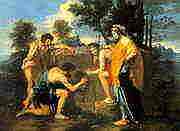 However, the esoteric enclave of Papus and Monsieur Philippe was actively opposed by
certain other powerful interests - the Grand Duchess Elizabeth, for example, who was
intent on installing her own favourites in proximity to the imperial throne. One of
the grand duchess's favourites was a rather contemptible individual known to posterity
under the pseudonym of Sergie Nilus. Sometime around 1903 Nilus presented a highly
controversial document to the czar - a document that supposedly bore witness to a
dangerous conspiracy. but if Nilus expected the czar's gratitude for his disclosure,
he must have been grievously disapointed. The czar declared the document to be an
outrageous fabrication, and ordered all copies of it to be destroyed. And Nilus
was banished from the court in disgrace.
However, the esoteric enclave of Papus and Monsieur Philippe was actively opposed by
certain other powerful interests - the Grand Duchess Elizabeth, for example, who was
intent on installing her own favourites in proximity to the imperial throne. One of
the grand duchess's favourites was a rather contemptible individual known to posterity
under the pseudonym of Sergie Nilus. Sometime around 1903 Nilus presented a highly
controversial document to the czar - a document that supposedly bore witness to a
dangerous conspiracy. but if Nilus expected the czar's gratitude for his disclosure,
he must have been grievously disapointed. The czar declared the document to be an
outrageous fabrication, and ordered all copies of it to be destroyed. And Nilus
was banished from the court in disgrace.
Of course the document - or, at any rate, a copy of it - survived. In 1903 it was serialised in a newspaper but failed to attract any interest. In 1905 it was published again - this time as an appendix to a book by a distinguished mystical, Vladimir Soloviov. At this point it began to attract attention. In the years that followed it became one of the single most infamous documents of the twentieth century.
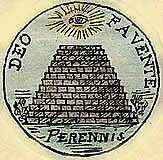 The document in question was a tract, or, more strictly speaking, a purported
social and political programme. It has appeared under a variety of slightly
differing titles, the most common of which is The Protocols of the Elders
of Zion. The Protocols allegedly issued from specifically Jewish
sources. And for a great many anti-Semites at the time they were convincing
proof of an 'international Jewish conspiracy'. In 1919, for example, they
were distributed to troops of the White Russian Army - and these troops,
during the next two years, massacred some 60,000 Jews who were held responsible
for the 1917 Revolution. by 1919 the Protocols were also being circulated
by Alfred Rosenberg, later the chief racial theoretician and propagandist for the
National Socialist Party in Germany. In Mein Kampf Hitler used the
Protocols to fuel his own fanatical prejudices, and is said to have
believed unquestioningly in their authenticity. In England the Protocols
were immediately accorded credence by the Morning Post. Even The Times,
in 1921, took them seriously and only later admitted its error. Experts today at
least in their present form, are a vicious and insidious forgery. Nevertheless,
they are still being circulated - in Latin America, in Spain, even in Britain - as
anti-Semitic propaganda.
The document in question was a tract, or, more strictly speaking, a purported
social and political programme. It has appeared under a variety of slightly
differing titles, the most common of which is The Protocols of the Elders
of Zion. The Protocols allegedly issued from specifically Jewish
sources. And for a great many anti-Semites at the time they were convincing
proof of an 'international Jewish conspiracy'. In 1919, for example, they
were distributed to troops of the White Russian Army - and these troops,
during the next two years, massacred some 60,000 Jews who were held responsible
for the 1917 Revolution. by 1919 the Protocols were also being circulated
by Alfred Rosenberg, later the chief racial theoretician and propagandist for the
National Socialist Party in Germany. In Mein Kampf Hitler used the
Protocols to fuel his own fanatical prejudices, and is said to have
believed unquestioningly in their authenticity. In England the Protocols
were immediately accorded credence by the Morning Post. Even The Times,
in 1921, took them seriously and only later admitted its error. Experts today at
least in their present form, are a vicious and insidious forgery. Nevertheless,
they are still being circulated - in Latin America, in Spain, even in Britain - as
anti-Semitic propaganda.
The Protocols propound in outline a blueprint for nothing less than total world domination. On first reading they would seem to be the Machiavellian programme - a kind of inter-office memo, so to speak - for a group of individuals determined to impose a new world order, with themselves as supreme despots. The text advocates a many-tentacled hydra-headed conspiracy dedicated to disorder and anarchy, to toppling certain existing regimes, infiltrating Freemasonry and other such organisations, and eventually seizing absolute control of the Western world's social, political and economic institutions. And the anonymous authors of the Protocols declare explicitly that they 'stage-managed' whole peoples 'according to a political plan which no one has so much as guessed at in the course of many centuries'.
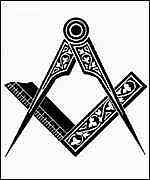 To a modern reader the Protocols might seem to have been devised by some
ficticious organisation like SPECTRE - James Bond's adversary in Ian Fleming's novels.
When they were first publicised, however, the Protocols were alleged to have
been composed at an International Judaic Congress which convened in Basle in 1897.
This allegation has long since been disproved. The earliest copies of the
Protocols, for example, are known to have been written in French - and the
1897 Congress in Basle did not include a single French delegate. Moreover, a copy of
the Protocols is known to have been in circulation as early as 1884 - a
full thirteen years before the Basle Congress met. The 1884 copy of the Protocols
surfaced in the hands of a member of a Masonic lodge - the same lodge of which Papus
was a member and subsequently Grand Master. Moreover, it was in this same lodge that
the tradition of Ormus had first appeared - the legendary Egyptian sage who amalgamated
pagan and Christian mysteries and founded the Rose-Croix.
To a modern reader the Protocols might seem to have been devised by some
ficticious organisation like SPECTRE - James Bond's adversary in Ian Fleming's novels.
When they were first publicised, however, the Protocols were alleged to have
been composed at an International Judaic Congress which convened in Basle in 1897.
This allegation has long since been disproved. The earliest copies of the
Protocols, for example, are known to have been written in French - and the
1897 Congress in Basle did not include a single French delegate. Moreover, a copy of
the Protocols is known to have been in circulation as early as 1884 - a
full thirteen years before the Basle Congress met. The 1884 copy of the Protocols
surfaced in the hands of a member of a Masonic lodge - the same lodge of which Papus
was a member and subsequently Grand Master. Moreover, it was in this same lodge that
the tradition of Ormus had first appeared - the legendary Egyptian sage who amalgamated
pagan and Christian mysteries and founded the Rose-Croix.
Modern scholars have established in fact that the Protocols, in their published form, are based at least in part on a satirical work written and printed in Geneva in 1864, The work was composed as an attack on Napoleon III by a man named Maurice Joly, who was subsequently imprisoned. Joly is said to have been a member of a Rose Croix order. Whether this is true or not, he was a friend of Vicor Hugo; and Hugo, who shared Joly's antipathy to Napoleon III, was a member of a Rose-Croix order.
It can thus be proved conclusively that the Protocols did not issue from the Judaic Congress at Basle in 1897. That being so, the obvious question is whence they did issue. Modern scholars have dismissed them as a total forgery, a wholly spurious document concocted by anti-Semitic interests intent in discrediting Judaism. And yet the Protocols themselves argue strongly against such a conclusion. They contain, for example, a number of enigmatic references - references that are clearly not Judaic. but these references are so clearly not Judaic that they cannot plausibly have been fabricated by a forger either. No anti-Semitic forger with even a modicum of intelligence would possibly have concocted such references in order to discredit Judaism. For no one would have believed these references to be of Judaic origin.
 Thus for instance, the text of the Protocols ends with a single statement,
'Signed by the representatives of Sion of the 33rd Degree'.
Thus for instance, the text of the Protocols ends with a single statement,
'Signed by the representatives of Sion of the 33rd Degree'.
Why would an anti-Semitic forger have made up such a statement? Why would he not have attempted to incriminate all Jews, rather than just a few - the few who constitute 'the representatives of Sion of the 33rd Degree'? Why would he not declare that the document was signed by, say, the representatives of the international Jewish conspiracy'. If anything, it would seem to refer to something specifically Masonic. And the 33rd Degree in Freemasonry is that of the so-called 'Ancient and Accepted Scottish Rite' which emerges mysteriously out of French Freemasonry in the mid eighteenth century.
The Protocols contain other even more flagrant anomalies. The text speaks repeatedly, for example, of the advent of a 'Masonic Kingdom', and a 'King of the blood of Sion', who will preside over this 'Masonic Kingdom'. It asserts that the future king will be of the 'dynastic roots of King David'. It affirms that 'the King of the Jews will be the real Pope' and 'the patriarch of an international church'. And it concludes in a most cryptic fashion, 'Certain members of the seed of David will prepare the Kings and their heirs... Only the King and the three who stood sponsor for him will know what is coming'.
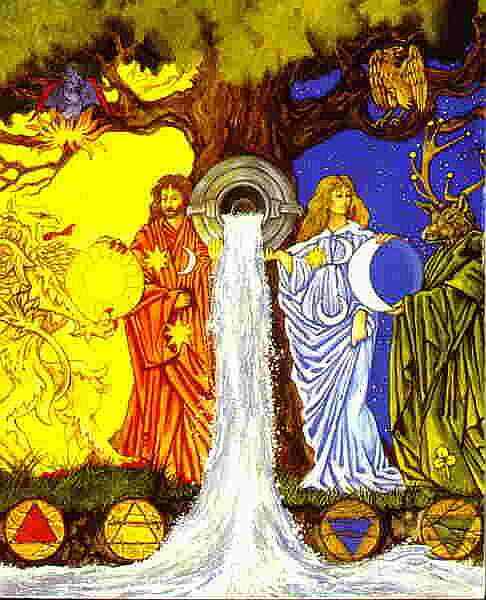 As an expression of Judaic thought, real or fabricated, such statements are
blatantly absurd. Since Biblical times no king has figured in Judiac tradition,
and the very principle of kingship has become utterly irrelevent. The concept
of a king would have been as meaningless to Jews of 1897 as it would be to Jews
today; and no forger can have been ignorant of this fact. Indeed the references
quoted would appear to be more Christian than Judaic. Folr the last two
millennia the only 'King of the Jews' has been Jesus himself - and Jesus,
according to the Gospels, was of the 'dynastic roots of David'. If one is
fabricating a document and ascribing it to a Jewish conspiracy, why include
such patently Christian echoes? Why speak of so specificallly and uniquely
Christian a concept as a pope? Why speak of an 'international church' rather
than an international synagogue or an international temple? And why include
the enigmatic allusion to 'the King and the three who stood sponsor' - which
is less suggestive of Judaism and Christianity than it is of the secret societies
of Johann Valentin Andrea and Charles Nodier? If the Protocols issued
wholly from a propagandist's anti-Semitic imagination, it is difficult to
imagine a propagandist so inept, or so ignorant and uninformed.
As an expression of Judaic thought, real or fabricated, such statements are
blatantly absurd. Since Biblical times no king has figured in Judiac tradition,
and the very principle of kingship has become utterly irrelevent. The concept
of a king would have been as meaningless to Jews of 1897 as it would be to Jews
today; and no forger can have been ignorant of this fact. Indeed the references
quoted would appear to be more Christian than Judaic. Folr the last two
millennia the only 'King of the Jews' has been Jesus himself - and Jesus,
according to the Gospels, was of the 'dynastic roots of David'. If one is
fabricating a document and ascribing it to a Jewish conspiracy, why include
such patently Christian echoes? Why speak of so specificallly and uniquely
Christian a concept as a pope? Why speak of an 'international church' rather
than an international synagogue or an international temple? And why include
the enigmatic allusion to 'the King and the three who stood sponsor' - which
is less suggestive of Judaism and Christianity than it is of the secret societies
of Johann Valentin Andrea and Charles Nodier? If the Protocols issued
wholly from a propagandist's anti-Semitic imagination, it is difficult to
imagine a propagandist so inept, or so ignorant and uninformed.
On the basis of prolonged and systematic research, we reached certain conclusions about the Protocols of the Elders of Sion. They are as follows.
1) There was an original text on which the published version the Protocols was based. This original text was not a forgery. On the contrary it was authentic. But it had nothing whatever to do with Judaism or an 'international Jewish conspiracy'. It was issued rather from some Masonic organisation or Masonically oriented secret society which incorporated the word 'Sion'.
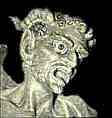 2) The original text on thich the published version of the Protocols
was based need not have been provocative or inflammatory in its language. But it may
well have included a programme for gaining power, for infiltrating Freemasonry,
for controlling social, political and economic institutions. Such a programme
would have been perfectly in keeping with the secret societies of the
Renaisance, as well as with the Compagnie du Saint-Sacrement and the
institutions of Andrea and Nodier.
2) The original text on thich the published version of the Protocols
was based need not have been provocative or inflammatory in its language. But it may
well have included a programme for gaining power, for infiltrating Freemasonry,
for controlling social, political and economic institutions. Such a programme
would have been perfectly in keeping with the secret societies of the
Renaisance, as well as with the Compagnie du Saint-Sacrement and the
institutions of Andrea and Nodier.
3) The original text on which the published version of the Protocols was based fell into the hands of Sergei Nilus. Nilus did not first intend it to discredit Judaism. On the contrary, he brought it to the czar with the intention of discrediting the esoteric enclave at the imperial court - the enclave of Papus, Monsier Philippe and others who were members of the secret society in question. Before doing so, he almost certainly doctored the language, rendering it far more venemous and inflammatory than it initially was. When the czar spurned him, Nilus then released the Protocols in their doctored form for publication. They had failed in their primary objective of compromising Papus and Monsieur Philippe. But they might still serve a secondary purpose - that of fostering anti-Semitism. Although Nilus's chief targets had been Papus and Monsieur Philipe, he was hostile to Judaism as well.
4) The published version of the Protocols is not, therefore, a totally
fabricated text. It is rather a radically altered text. But despite the alterations
certain vestiges of the original version can be discerned - as in a palimpsest,
or as in passages of the Bible. These vestiges - which referred to a king, a pope,
an international church, and to Sion - probably meant little or nothing to Nilus.
He certainly would not have invented them himself. But if they were already there,
he would have had no reason, given his ignorance, to excise them. And while such
vestiges might have been irrelevent to Judaism, they might have been extremely
relevent to a secret society. As we learned subsequently, they were - and still are
- of paramount importance to the Prieure de Sion.
 The Holy Blood and the Holy Grail
The Holy Blood and the Holy Grail
Random House 1982, 1996
Michael Baigent, Richard Leigh
& Henry Lincoln
Further Reading: